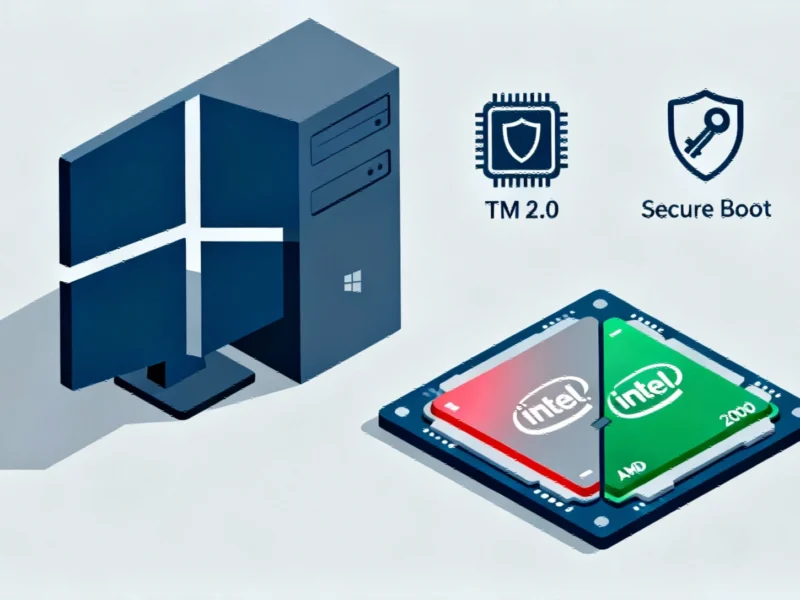According to Digital Trends, Microsoft is expanding Windows 11’s full screen gaming experience to more handheld devices after initially launching on ASUS ROG Ally models. The preview began rolling out to MSI Claw devices on October 31, with more manufacturers expected to follow in the coming months. Users can enable the feature through Settings under Gaming > Full screen experience, then select Xbox as their home app for automatic startup capability. The system creates a simplified, controller-first launcher that minimizes desktop distractions while maintaining access to Windows tools when needed, as detailed in Microsoft’s Windows Insider announcement. This expansion represents Microsoft’s broader strategy to bridge the gap between Windows flexibility and console simplicity.
The Inevitable Platform Convergence
What we’re witnessing is the logical culmination of Microsoft’s decade-long effort to unify its gaming ecosystem. Since the Xbox One era, Microsoft has been methodically breaking down the walls between console and PC gaming through initiatives like Play Anywhere, Game Pass integration, and cloud streaming. This handheld interface represents the most tangible manifestation yet of that vision—a unified experience that adapts to your hardware while maintaining your gaming identity. The strategic brilliance lies in recognizing that form factor dictates interface expectations: when you’re holding a seven-inch device, you want console simplicity; when docked to a monitor, you want PC flexibility.
Developer Experience Revolution
For game developers, this standardized interface across multiple handheld manufacturers creates something previously impossible in the Windows gaming space: a consistent target environment. Historically, Windows gaming has been plagued by fragmentation—different screen sizes, control schemes, and performance profiles that make optimization challenging. By establishing a shared template across devices like the Ally, Claw, and future partners, Microsoft gives developers a predictable platform to target. This could accelerate handheld-optimized game development and potentially lead to certification programs similar to Xbox’s “Optimized for Series X|S” badges, creating clearer value propositions for consumers.
Redefining the Portable Gaming Market
The timing of this expansion is strategically significant as the portable gaming market fragments into distinct segments. On one end, we have dedicated consoles like Nintendo Switch; on the other, fully open PC handhelds like Steam Deck and its Windows competitors. Microsoft’s approach carves out a third path: the familiarity and ecosystem of Xbox with the hardware flexibility of Windows. This positions Microsoft uniquely against Valve’s SteamOS while creating a compelling alternative to Apple’s emerging gaming ambitions. Over the next 12-18 months, I expect to see Microsoft leverage this foundation to introduce exclusive handheld features in Game Pass and potentially even first-party hardware that showcases the ideal implementation of this vision.
The Performance Optimization Challenge
While the user experience benefits are clear, the technical implementation presents significant challenges that Microsoft must overcome. Windows has never been designed as a lean, gaming-first operating system, and simply layering a console-style interface atop existing processes won’t deliver the performance gains hardcore handheld gamers expect. The real test will be whether Microsoft can successfully defer non-critical background processes without breaking compatibility with the vast Windows software ecosystem. If they succeed, they create a new category of gaming device; if they fail, they risk creating another Windows RT—a compromised experience that satisfies neither PC enthusiasts nor console gamers.
Beyond Gaming: The Broader Implications
Looking beyond 2025, this initiative signals Microsoft’s recognition that interface modality—how we interact with devices based on context—will define the next era of computing. The same principles being tested in gaming handhelds could extend to tablets, dual-screen devices, and even desktop scenarios where users want to transition between productivity and entertainment modes. Microsoft is essentially building a framework for context-aware computing interfaces, with gaming as the initial proving ground. If successful, we could see this approach influence Windows 12 development and potentially create new licensing opportunities for manufacturers wanting to offer “Microsoft Certified” gaming experiences on their hardware.




